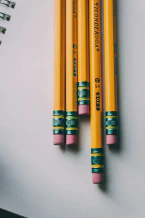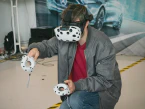The Minimalist Toy Box

The Importance of Simplifying Your Child’s Toy Collection
As a parent, you want to provide your child with the best toys that will aid in their development. However, over time, you may find yourself surrounded by a pile of toys that your child has accumulated. The truth is, an excessive amount of toys can actually hinder your child’s playtime and development.
I remember being bombarded with advertising messages that convinced me that certain toys were essential for my child’s growth. I thought that the more toys my child had, the longer they would play and the better they would develop. But I soon realized that this was not the case.
When a child is surrounded by too many toys, it can be overwhelming and lead to choice paralysis. It’s like sitting at a desk with several devices and not knowing which one to use for a specific task. It can be distracting and hinder productivity.
That’s why simplifying your child’s toy collection is essential. It not only creates a more inviting play space but also helps to foster imaginative and meaningful play.
As a Simplicity Parenting coach, I recommend going through your home and collecting all the toys your child has accumulated. Once you have a pile of toys, it’s time to weed out the toys that are no longer necessary or appropriate.
Start by getting rid of broken toys, ultra-specific toys that only have one purpose, and toys that play for your child. These types of toys don’t encourage constructive and imaginative play.
Toys that encourage aggressive play or are based on advertisements for a company or a movie should also go. They only limit a child’s imagination and creativity.
Once you have identified the toys that no longer serve a purpose, you will be left with a few high-quality, simple, and open-ended toys that your child can play with for hours. These toys don’t have to be expensive; they can be made from wood or metal or any durable high-quality material.
A great tip is to keep a large box and rotate out some of the favorite toys. This keeps things fresh and exciting for your child and prevents you from having to buy more toys.
In conclusion, simplifying your child’s toy collection can have a positive impact on their playtime and development. It creates a more inviting and soothing play space that encourages imaginative play and problem-solving skills. So, take some time to declutter your child’s play area and watch them thrive.
How Excessive Toys Can Hinder Your Child’s Playtime
Have you ever walked into your child’s playroom and felt overwhelmed by the amount of toys scattered on the floor? I know I have. As a parent, it’s easy to get carried away with buying toys for your child. We want to provide them with endless options for play and development. However, having too many toys can actually hinder your child’s playtime and development.
When a child is presented with an excessive amount of toys, they may become overwhelmed and struggle to focus on one thing. It’s like being at a buffet with too many options and not knowing where to start. This can lead to choice paralysis, where a child becomes indecisive and unable to make choices.
Furthermore, toys that are too specific or highly designed for a specific purpose can limit a child’s creativity and imagination. These toys only serve one purpose and can’t be transformed into anything else, which can hinder a child’s problem-solving skills.
Toys that play for your child, such as those with batteries and flashing lights, can also be detrimental to their playtime. These toys limit a child’s ability to be creative and imaginative because they don’t need to use their own imagination to make the toy work.
It’s important to note that too many toys can also lead to a lack of appreciation and care for their belongings. When a child has too many toys, they may not fully appreciate or take care of them. This can lead to a lack of responsibility and a sense of entitlement.
In conclusion, excessive toys can hinder your child’s playtime and development. It’s important to be mindful of the toys you provide your child and the impact they may have. Simplifying your child’s toy collection can create a more inviting play space that encourages imaginative and meaningful play. So, take some time to declutter your child’s play area and watch them thrive.
Simplicity Parenting: A Guide to Simplifying Your Child’s Toys
As a parent, you may feel pressured to provide your child with the latest and greatest toys on the market. However, as I’ve learned through Simplicity Parenting, simplifying your child’s toys can actually benefit their development and playtime.
Simplicity Parenting is a method developed by Kim John Payne that focuses on creating a simplified and intentional environment for children. This approach emphasizes the importance of quality over quantity and encourages parents to declutter their child’s play area.
The first step in simplifying your child’s toys is to go through and identify the toys that are no longer necessary or appropriate. Broken toys, toys that are ultra-specific, and toys that play for your child should all be removed from the collection. Toys that encourage aggressive play or are based on advertisements for a company or a movie should also be eliminated.
Once you have identified the toys that no longer serve a purpose, you can focus on keeping high-quality, simple, and open-ended toys. These toys should be made from durable materials such as wood or metal and encourage imaginative and meaningful play.
A key element of Simplicity Parenting is to limit the number of toys your child has access to at any given time. This encourages them to fully appreciate and care for their belongings while fostering their imagination and creativity.
Rotating toys in and out of your child’s play area can also keep things fresh and exciting for them. A large box where you can store some of their favorite toys and rotate them periodically can prevent you from having to constantly buy new toys.
In conclusion, Simplicity Parenting offers a guide to simplifying your child’s toys and creating an intentional and inviting play space. By decluttering and limiting the number of toys your child has access to, you can encourage imaginative and meaningful playtime while promoting their development and appreciation for their belongings.
The Harmful Effects of Advertising on Children’s Toy Choices
In today’s world, children are bombarded with countless advertisements that are specifically designed to persuade them to ask their parents for the latest and greatest toys. This phenomenon, known as “pester power,” can have harmful effects on both the child and the family as a whole.
Advertising messages directed towards children have never been as prevalent as they are today. These messages often promote the idea that certain toys will help a child develop specific skills, whether it’s learning to read or dance ballet. However, many of these toys have numerous functions, flashing lights, and buttons, which can be overstimulating and disruptive to a child’s focus and attention.
Moreover, many toys are advertised as being essential for a child’s development, which can create a sense of pressure on parents to buy them. This can lead to a cluttered play area and choice paralysis for children, which can hinder their ability to engage in imaginative play.
It’s important for parents to recognize the harmful effects of advertising on their child’s toy choices and to make intentional and informed decisions about what toys they allow into their home. A key element of Simplicity Parenting is to create an ad-free zone for children, where they can engage in open-ended play without being bombarded with messages that push them towards certain toys.
In conclusion, the harmful effects of advertising on children’s toy choices can create a cluttered play area, lead to choice paralysis, and disrupt a child’s focus and attention. As parents, it’s essential to be aware of these effects and to make intentional decisions about what toys are allowed into the home. By creating an ad-free zone and limiting the number of toys, parents can encourage imaginative and meaningful playtime while promoting their child’s development and appreciation for their belongings.
Types of Toys to Donate or Give Away to Simplify Your Home
As parents, we want our children to have a variety of toys to play with and enjoy. However, it’s essential to recognize when the number of toys becomes excessive and begins to hinder a child’s playtime. In these cases, it’s time to simplify by donating or giving away some of the toys that are no longer needed or played with.
Simplicity Parenting offers some useful guidelines for parents who want to simplify their child’s toy collection. One of the key suggestions is to collect all the toys in your home, from the playroom to the child’s bedroom, and sort through them to determine which ones are no longer needed.
Here are some of the types of toys that can be donated or given away:
Broken Toys: If a toy is broken and cannot be fixed, it’s time to let it go.
Ultra-Specific Toys: Toys that have only one purpose and cannot be imagined into something else are not as useful for imaginative play and can be donated.
Active Toys: Toys that play for your child can hinder their ability to engage in imaginative play, and passive toys are often better for promoting creativity and problem-solving skills.
Annoying Toys: If a toy is loud, annoying, or disruptive, it’s time to say goodbye.
Advertisement-Based Toys: Toys that are essentially advertisements for companies or characters from movies and TV shows can limit a child’s imagination and should be given away.
Fad Toys: Toys that are popular for a short time and then quickly lose interest are not worth keeping.
Duplicates: If a child has more than one of the same toy, it’s often better to keep just one and donate the rest.
Aggressive Toys: Toys that encourage aggressive play, such as highly detailed guns or ammunition, are not conducive to productive and constructive playtime.
Creating a simplified and clutter-free play area can be beneficial for both children and parents. By focusing on simple, high-quality toys that encourage imaginative and meaningful play, parents can promote their child’s development and create a more enjoyable and peaceful environment at home.
The Benefits of Open-Ended Toys for Children’s Imaginative Play
As parents, we all want our children to grow up happy and healthy, and a crucial part of that is fostering their creativity and imagination through play. One way to do this is by providing children with open-ended toys that encourage imaginative and meaningful play.
Open-ended toys are those that can be used in a variety of ways and allow children to use their imagination and creativity to create their own play scenarios. Unlike specific or highly designed toys, open-ended toys can be used for many purposes, and the possibilities are endless.
Blocks are a classic example of an open-ended toy that can be used in countless ways. Children can use them to build towers, bridges, or even castles, and they can incorporate them into their imaginative play in many different ways. Other open-ended toys include balls, dress-up clothes, and art supplies.
The benefits of open-ended toys for children’s imaginative play are significant. They allow children to develop their problem-solving skills and creativity, as well as their social skills, as they engage in collaborative play with others. Children can learn to negotiate, compromise, and communicate with their peers, all while having fun and exploring their imaginations.
Additionally, open-ended toys can be enjoyed by children of all ages and abilities. They are often more durable and long-lasting than specific toys, making them a worthwhile investment for parents.
In contrast, toys that are highly specific or only have one purpose can limit a child’s creativity and imagination, as they are designed to be used in only one way. Battery-operated or electronic toys can also hinder a child’s ability to engage in imaginative play, as they do not require the child to use their imagination.
In conclusion, providing children with open-ended toys is an excellent way to encourage their creativity and imagination while promoting their social and problem-solving skills. As parents, we can promote our child’s development by focusing on simple, high-quality toys that encourage meaningful and imaginative play.
How Rotating Toys Can Keep Children Interested and Excited
Are you tired of constantly buying new toys for your child, only to have them lose interest in them after a few days or weeks? One way to keep your child engaged with their toys is by rotating them.
By keeping some toys out of sight for a few weeks or even months, and then reintroducing them later, your child will be excited to rediscover them. This can help to breathe new life into old toys and keep your child interested in playing with them.
Rotating toys also has the added benefit of reducing clutter in your home. By only keeping a selection of toys out at any given time, you can create a more organized and visually appealing play space for your child.
To start, try putting away some of the toys that your child hasn’t played with in a while. Store them in a box or closet, and then bring them out again after a few weeks. You might be surprised at how much your child enjoys rediscovering these “old” toys.
Remember, the key is to keep things simple and avoid overwhelming your child with too many choices. By rotating toys and keeping your child’s play space organized, you can create an environment that encourages imaginative play and keeps your child engaged and excited.
Creating a Soothing and Inviting Play Space for Your Child’s Development
As parents, we want our children to have a safe and happy environment where they can grow and learn. This includes their play space, which can have a significant impact on their development. It’s important to create a soothing and inviting play area that stimulates their imagination and creativity.
The first step in creating a welcoming play space is to simplify and declutter. As we discussed earlier, too many toys can be overwhelming and hinder a child’s ability to focus and play imaginatively. Remove broken or overly specific toys, as well as any that encourage aggressive or passive play. Also, get rid of toys that annoy you or advertise a company.
Once you have pared down the toy collection, focus on creating a calming atmosphere. Choose a color scheme that is soothing and incorporate soft textures like plush rugs or pillows. Keep the space organized with easy-to-access storage for toys and materials.
In addition to simplifying and creating a soothing environment, it’s important to encourage open-ended play with toys that promote imaginative and creative play. Blocks, balls, and dress-up clothes are great examples of open-ended toys that can be used in many different ways, allowing children to explore their creativity and problem-solving skills.
Another way to keep your child interested and engaged is to rotate toys regularly. Instead of having all toys available at once, store some away and bring out new ones periodically. This helps keep playtime fresh and exciting, and encourages children to use their imagination and creativity to explore and play with different toys.
In conclusion, creating a welcoming and soothing play space for your child is crucial for their development. Simplify, declutter, and choose open-ended toys to encourage imaginative play. Incorporate calming colors and textures, keep the space organized, and rotate toys to keep playtime fresh and exciting. By following these tips, you can create a space that cares your child’s growth and development while also being a joy to spend time in.
Conclusion
Simplifying your child’s toy collection is a valuable investment in their development and well-being. Through the Simplicity Parenting approach, you can reduce clutter and noise, create a more soothing environment, and foster your child’s imagination and creativity. By removing excessive toys and opting for open-ended and high-quality toys, you can support your child’s playtime and enhance their cognitive, emotional, and social skills. Additionally, by rotating toys and avoiding aggressive or advertisement-based toys, you can keep your child interested and excited about their playthings. Ultimately, creating a thoughtful and inviting play space can make a positive difference in your child’s life and your family’s daily routine.
















